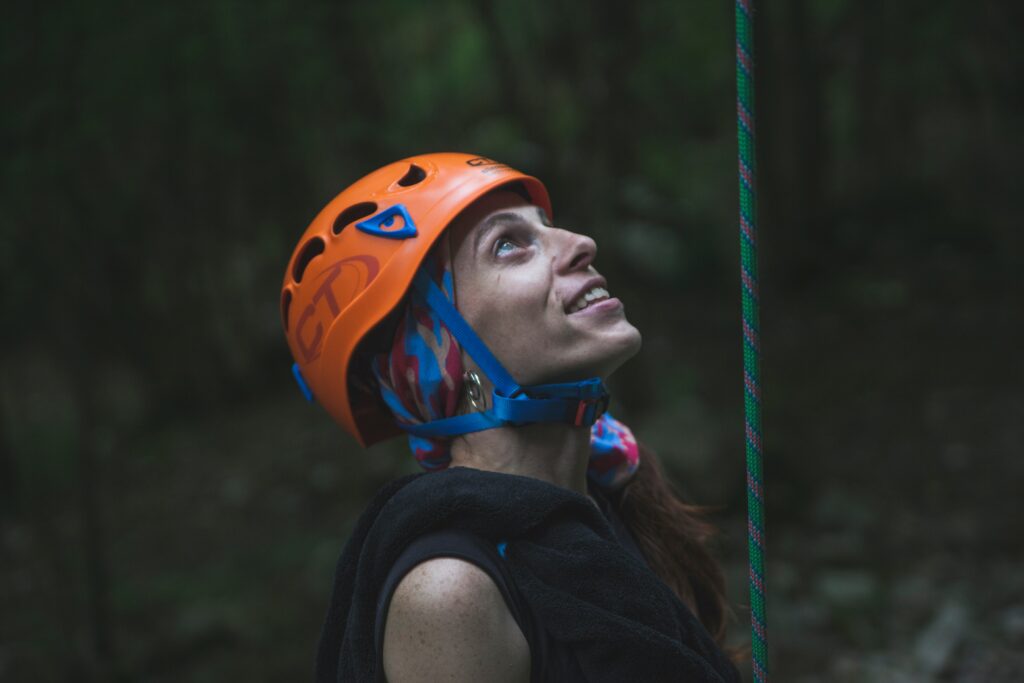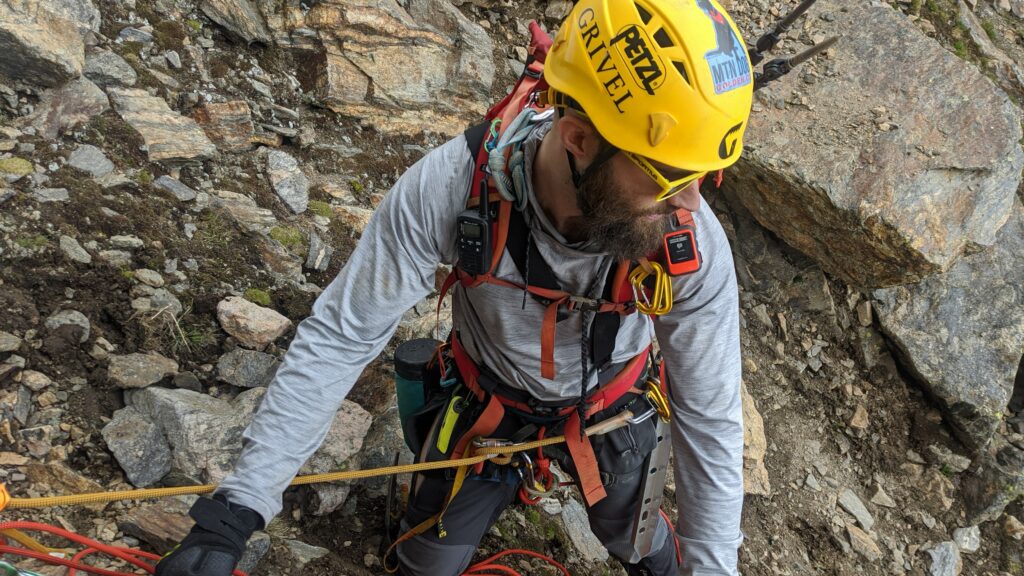No matter your skill level or knowledge base, rock climbing is an inherently dangerous sport. Yes, risk can be minimized but never eliminated.
That’s why establishing a base of knowledge and know-how when it comes to outdoor climbing is imperative to help you have the safest outdoor climbing experience possible.
It is better to be more prepared and well equipped to handle any situation when it comes to outdoor climbing. If you’re new to climbing, the safest way to get outside is to hire a guide or take an instructional course to teach you the ropes.
Dangers of outdoor rock climbing
What’s more is that most rock climbing accidents and deaths are due to human error of some kind, not a gear failure. That means that most of the dangers involved in outdoor climbing are under our control, and we can do our due diligence to prevent them.
Things like
- knowing how to use your safety gear properly,
- learning how to land safely when bouldering,
- doing your safety checks,
- being aware of climbing and weather conditions, and
- climbing within your skill level is somewhat within your control as a climber.
There are always natural risks, such as falling rocks, sudden weather changes (common in the mountains), or gear failure that can cause severe injury or even death.
But rock climbers are far more likely to experience a minor injury versus a serious injury in their climbing career. These will be things like scraped knees or elbows from the rock wall or maybe a sprained ankle from landing on the edge of a crash pad.
Most of these minor injuries tend to be reported by sport climbers, trad climbers, or boulderers. So, if you are venturing into outdoor climbing in pursuit of top-roping, your risk has already decreased because you won’t be lead climbing or bouldering.
Minimize risk when climbing outdoors with these safety tips
Severe injuries and minor injuries can be minimized with the proper knowledge and attention. Here are our top tips to improve your level of outdoor climbing safety.
1. Climb within your ability level
It is great to get outside and push grades, but this should be done in a controlled manner. It is one thing to go out to the crag and push grades with a group of experienced climbers, and it is something else to jump from lead climbing in a gym to trad climbing a multi-pitch.
We aren’t saying that you should never challenge yourself when climbing outdoors, but be aware of your physical boundaries and technical knowledge.
In some cases, you may be strong enough to climb something, but you may lack the technical knowledge (i.e., how to build a trad anchor or clean a sport anchor) to do it safely. To overcome these barriers, enroll in an instructional class on anchor building, climbing technique, or climb with more experienced people.
You can also hire a personal trainer to help you build up your climbing endurance if you’re preparing for a big climb and want to be physically prepared.
2. Have the proper safety equipment (and know how to use it!)
You need to know the gear necessary to complete a climb safely when you head outside. This knowledge can be found on online resources like Mountain Project or guidebooks for the area you plan to climb. These resources also provide you with approach information, and if you use online platforms, they may also provide weather updates.
Knowing what you need before you go can save you a lot of time, trouble, and potentially an accident. Just having the safety gear will only get you so far, though. You need to know how to use it too!
If you’ve climbed in a gym before, you likely already know how to wear your harness and tie a few knots. But do you know how to clip draws when sport climbing to avoid back clipping or z-clipping?
Can you build a toprope anchor using your own gear?
Do you know how to place solid gear?
You need to ask yourself these types of questions when you are investing in gear and when you are heading outside to climb. There are several resources to learn how to do these things, such as articles online, videos, books, courses, and friends.
Simply taking the time to practice these skills under the supervision of someone who already knows the ins and outs of climbing safety will help you feel more confident when climbing outdoors, and it will be much safer when you go on your own.
Other safety gear to always use outdoors: helmets.
Helmets should ALWAYS be worn by both the climber and belayer.

3. Understand belay systems and knots
A big part of knowing how to use your safety gear is knowing how to belay correctly and tie your knots. On top of that, always do safety checks for your climber and belayer. Even if you are experienced as a climber, a safety check can save your life. We are all human, and humans make mistakes. Double-checking helps us catch those mistakes before it is too late.
Lead belaying and toprope belaying differ, so know how to do both if you plan to climb in both styles.
There are a few ways to tie into your harness as the climber. The most common way is to use the figure-eight follow-through knot. Know how to tie this knot with proficiency and perform checks on your partner.
Other knots should be learned and practiced for anchor building, self-rescue, and other climbing skills.
Knowing how to tie knots is essential. Take the time to learn about anchor systems and how to clean anchors. While sport climbing tends to be less technical than trad climbing, plenty of accidents occur when cleaning anchors due to a lack of knowledge and know-how.
4. Have experience or climb with someone who does
If you read the above tips and were thoroughly confused, then the best tip to apply is this one: climb with someone more experienced so they can teach you best practices for outdoor climbing safety.
You don’t necessarily need to book a guided trip with a professional or enroll in an instructional course if you have a knowledgeable friend. Still, the benefit of booking with a certified climbing guide is that they’re professionally trained.
They’ve not only done these things themselves, but they’ve gone through classes to learn best practices and how to teach rock climbing safety to people of all skill levels.
In the end, while some risk in rock climbing is left up to nature, a lot of it is up to you. With the proper education, practice, and safety equipment, you can minimize some risks.
Not sure if you’re ready to climb outside on your own yet? Hire a guide!


